China
The Real Ivory Game

China’s new domestic ban on the ivory trade presents all the makings of an excellent global public-relations exercise. But it is a meaningless move in a country where enforcement against wildlife crimes is often just another exercise in window-dressing and lip service.
One morning in December, I woke up to a news item on television featuring another Donald Trump Twitter statement — this time saying that China had been caught red-handed sidestepping the United Nations embargo on North Korea with ship-to-ship transfers of oil products on the high seas. It felt like déjà vu — certainly in the context of the rules and regulations associated with the Convention on International Trade in Endangered Species (CITES), also a UN body meant to control illegal international trade.

A smuggler pushes his wares around an illegal border crossing.
Of course, the pattern of non-compliance to the convention is not restricted to China, but involves a wide range of parties.
At the end of 2017, China declared that it had closed down the domestic legal trade in ivory. Conservation-establishment players did victory laps, lauding the move as a major step in curtailing elephant poaching. The news website China.org featured an article entitled: “More efforts are needed to stamp out the ivory trade”, announcing that China had now done its bit and that it was up to the international community to follow suit.
Whenever I am at home and receive my daily Google updates on wildlife-trade issues, there are now enough of these announcements out there to give me the feeling that maybe something is indeed changing. That the world is finally taking the ivory issue seriously, a view reinforced by NGO-generated press releases that deal with enforcement issues and tales of success.
Then it is off on one of my usual gigs, packing the obligatory bag to do some filming and investigative work in regions like West Africa, the Middle East and Southeast Asia — which generally results in a serious reality check.
Reality bites particularly hard in the context of China; that country’s funnel effect in sucking up the planet’s biodiversity; as well as the control measures supposedly in place to curb the fallout. The Asian juggernaut clearly leads the demand for products coming from high-profile, protected species, but also from the more low-key victims: seahorses, starfish, sea cucumbers, turtles, abalone and so on.
To report on trends intended to counteract this global momentum, most items in the news feature what are obviously opportunistic, rather than systematically effective, enforcement activities against the illegal trade. On my trips, I regularly visit border enclaves controlled by Chinese nationals — in places like Laos and Myanmar — and habitually witness a complete lack of control. I see tons of illegal wildlife products for sale. The key clientèle are Han Chinese, who eventually take most items back into China.
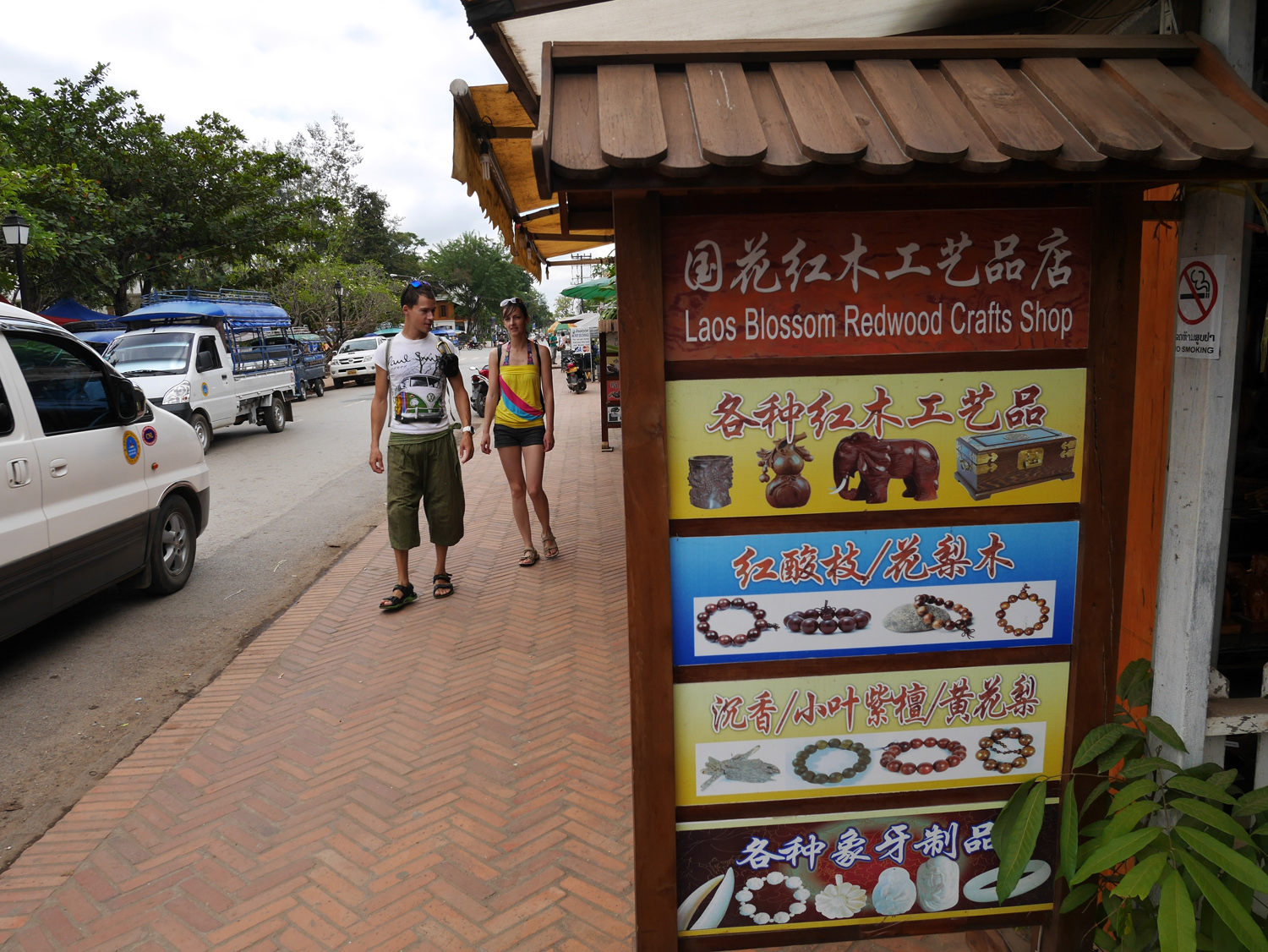
A Chinese-owned shop in Laos advertising ivory products.
After checking into a flight from Hanoi, Vietnam, to Guangzhou, China, we actually filmed a couple in the departure hall — the wife retrieving from her purse a collection of ivory items to admire and try on. She had clearly just purchased them.
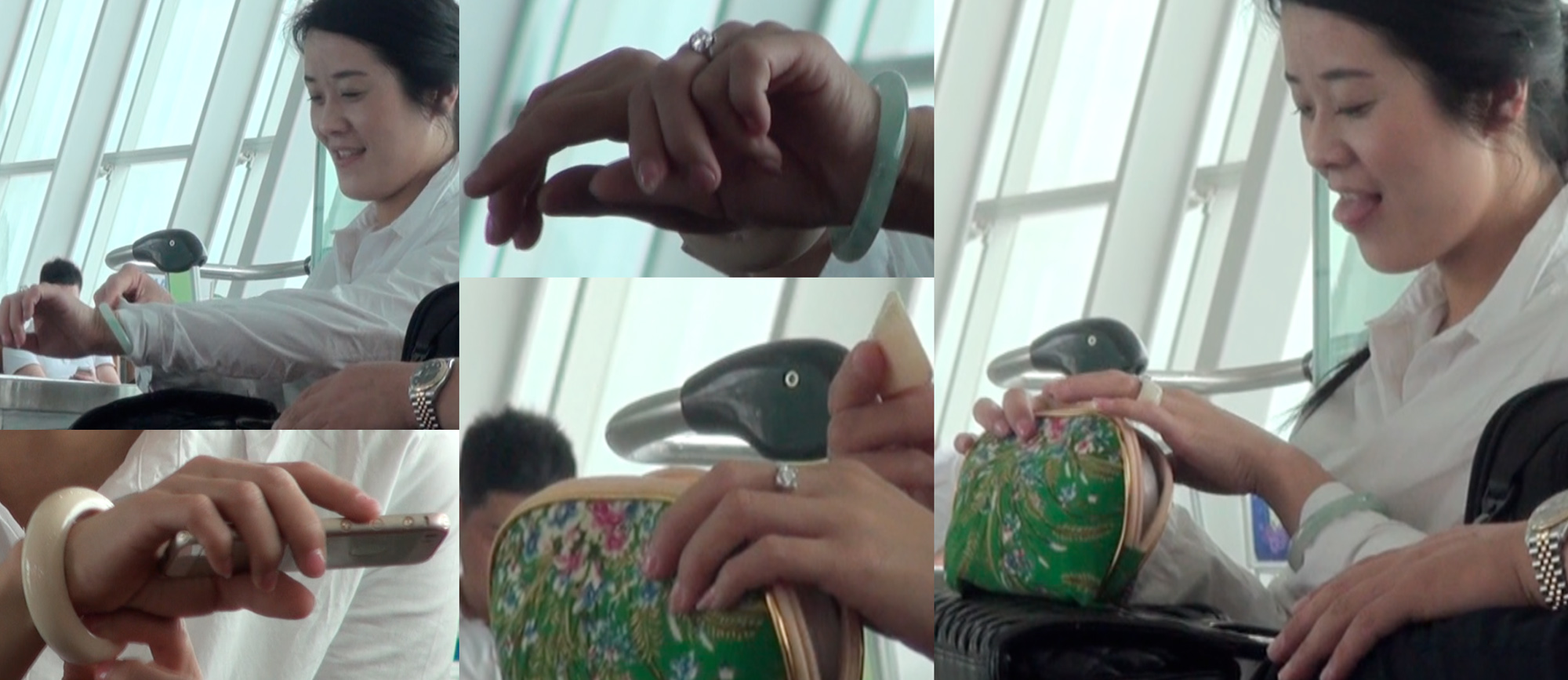
A Chinese traveller admires her new illegal jewellery with obvious delight before embarking on a flight to Guangzhou, China.
We followed her through customs in Guangzhou. No sign of any control. No sign of any sniffer dogs like those that have now appeared at several airports in Africa — Nairobi, Entebbe and then some.
There appears to be no law in China restricting the ownership of illegal wildlife products. As long as a buyer or seller is not caught in the act of a commercial transaction, there seems to be zero problem in openly displaying these items as status symbols, the likes of which now drive most of this market.
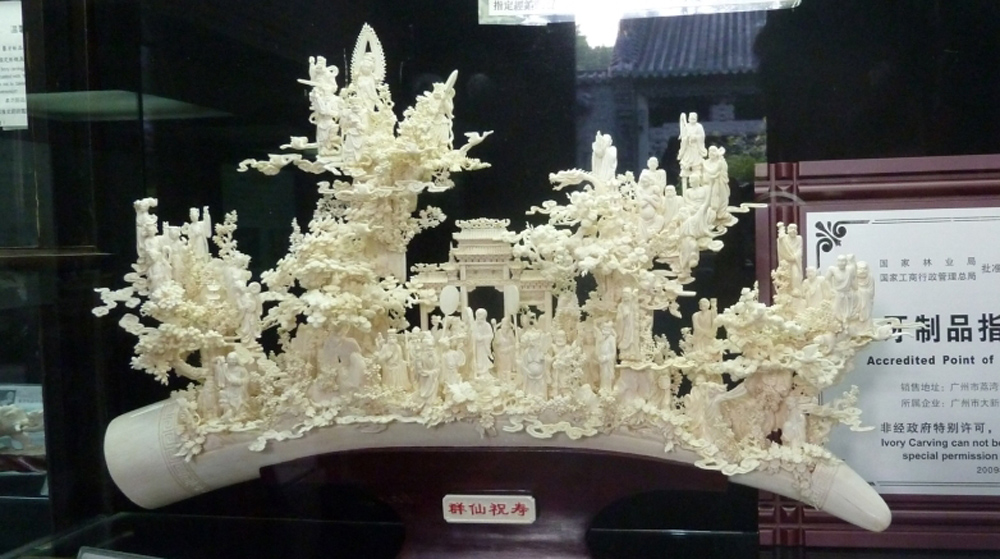
Legal ivory for sale in China. Its authentication certificate is on display.
I hear tales from local operatives I have worked with regularly, in tourist spots like Luang Prabang in Laos and Mong Lah in Myanmar, stating that Chinese nationals are either buying up or leasing shop premises that flaunt ivory, rhino horn and tiger-bone jewellery and other wildlife products as display highlights.
These shops also display the usual WeChat link — the Chinese alternative to WhatsApp — and the offer of free internet access, so that the folks back home can also be shown bargain items and place additional orders via their phones.
Ever since China announced about 18 months ago that it would eventually close its legal domestic ivory trade, there has been a constant stream of news items that this would be a game-changer.
It is a fantastic public-relations bandwagon — with a litany of NGOs and even filmmakers taking credit for this development.
At no point have I seen any writer comparing this development with so-called accolades like China outlawing the domestic trade in rhino horn in 1993. Since that watershed moment, poaching pressure on rhinos has increased exponentially, and more money than ever before is being poured into trying to protect Africa’s last rhinos. What does this say about the domestic legislation, devoid of the necessary enforcement to make the difference?
According to Esmond Bradley Martin — the renowned rhino horn-trade researcher and then-UN rhino ambassador who was murdered in Nairobi in February — various authorities in China had held some 10 tons of stocks in 1993, with no indication of what would be happening to these stocks after the ban. Why would things be different when it comes to ivory and the remaining “legal” stock?
During the run-up to the end-of-December deadline in 2017, local contacts in the border regions spoke of traders arriving with their stocks of raw material and workshop equipment, presumably having been told by Chinese policymakers that they should not count on any compensation when their China-based shops would have to shut doors.
As long as existing stocks of supposedly legal items are not destroyed — or bought up and locked away — they have and will end up in what is now officially the black market.
At the end of November, we visited a then-legally licensed shop in Guangzhou. In the window, indeed, a for-sale sign indicating a change of tack.

A for-sale sign in the window of an ivory store in Guangzhou, China.
They also operated a workshop, the shopkeeper confirmed, and the store items would be moved back to the workshop once they had closed down. We could not get any answers about what would happen to all the remaining licensed stock, but when we casually checked out the phone number on WeChat, we found that the merchandise was still freely available via the store’s web-based platform.
The trade in cyberspace is clearly the big new loophole to domestically promote and sell ivory products in China.
An internet based-search for ivory in China.Such new retail platforms as well as traders in neighbouring countries, plus Chinese-controlled enclaves in these countries, have very quickly caught on to these fantastic new opportunities: marketing their wares to a rising number of increasingly affluent Chinese tourists, assuming zero risk when taking the products back to the “Middle Kingdom”.
In Laos alone, we sourced a list of 42 Chinese nationals trading via the internet into China.
In 2016, a Save the Elephants survey in China indicated that the price for raw ivory had dropped by 60% — implying that this was a consequence of the domestic market’s imminent closure.
CITES Secretary-General John Scanlon immediately joined the cause, declaring that “the bottom had dropped out of the ivory market”.
Based on personal, anecdotal data stretching over a decade, our own research revealed that average prices in neighbouring countries had come down from $1,200 to $800 per kilo.
The drop in the per-kilo price of rhino horn was even more pronounced, although this could not possibly have had anything to do with an imminent closure of the domestic market (it closed in 1993).
However, when valuing the cost of worked trinkets like ivory bangles or necklaces, the prices remained at a level of $2-$4 per gram. In the case of rhino horn, a gram of horn artefact would set you back more than $100.
Lower raw prices for ivory retail products would mean a higher profit margin for the traders and/ or middlemen, as well as the retailers. This trend seems to have lured more traders, some with retail stores — many of which are going into e-commerce.
While in Guangzhou on our most recent trip, we tested the online market.
Our local operatives from Hong Kong soon found out that online searches required special terminology to get a good selection: for ivory it was “JELLY” or “white plastic”. WeChat users had special terms and emojis for pretty much all these illegal wildlife products — using proper names could result in keyword filters blocking the message.

These are the search results for “JELLY” on Taobao, the Chinese internet-shopping platform.
Offered among the same suppliers’ hundreds, even thousands, of ivory items, were carved pangolin scales, rhino-horn medallions, so-called karma (beaded) bracelets, hornbill and turtle jewellery, tiger-bone items and, nowadays, a lot of elephant-skin jewellery.
Prior to a payment and shipping for the tiger-bone items via the WeChat Wallet, the supplier in question sent customer references to assure us that he could be trusted with such transactions.
The items indeed arrived in a very timely fashion. The package was delivered to the concierge at our hotel in Guangzhou and we picked it up without any kind of problem. The samples have, in the meantime, gone to a Swiss lab for testing to see if they are real or fake.

You’ve got mail — the author opens the tiger items ordered from the internet after they arrived at his hotel.
They could even be from lion, seeing this species is at the centre of another big new scam — thanks, in no small part, to South Africa’s decision to export 800 lion skeletons a year. These end up being sold as sought-after tiger-bone products. We have key dealers confirming as much on hidden camera, insisting that nobody can tell the difference.
One trader informed our intermediary: all items offered on his platform as legal mammoth ivory were, in fact, from elephant.
Now that melting permafrost is delivering large numbers of mammoth tusks into the hands of traders, there are also bogus mammoth-ivory outlets popping up. Legally and illegally exporting tons of the stuff out of Siberia into China each year, the local traders then pass it off as elephant products — thereby creating a growing loophole to launder elephant ivory.
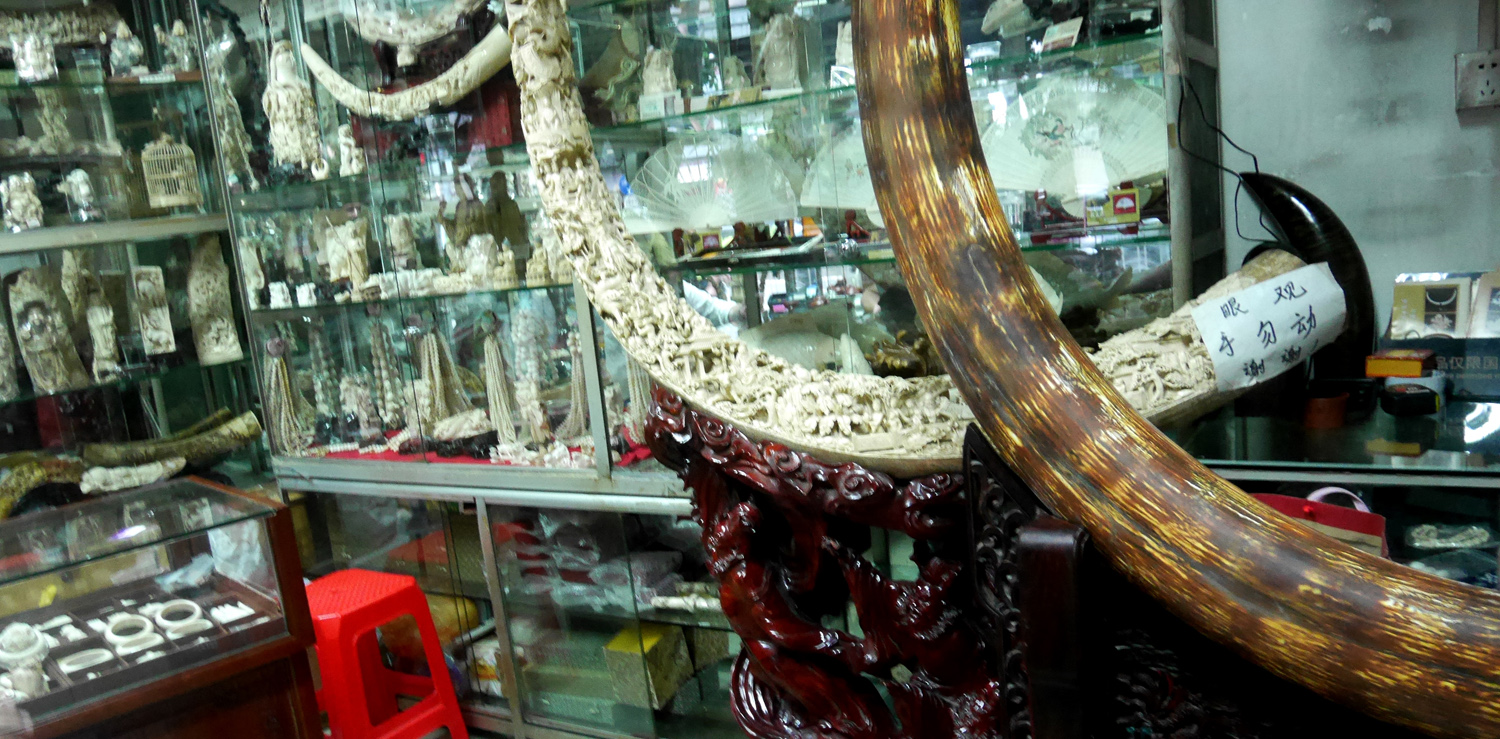
Mammoth ivory can be bought at Guangzhou airport, China.
After you have passed through customs and immigration control, you can even waltz into such an outlet at the departure area of Guangzhou airport, supposedly offering a wide range of mammoth-ivory products.
I have admired some fantastic art pieces carved out of elephant and mammoth ivory over the years.
Looking at big pieces, even a layman can tell the difference by identifying the “Schreger lines” or cross-hatchings, which are not present in elephant ivory.
I have also read the tales of a handful of old-fashioned expert carvers — considered part of China’s cultural heritage — now having to work with the mammoth tusks because the end-products, unlike elephant ivory, can still be sold legally.
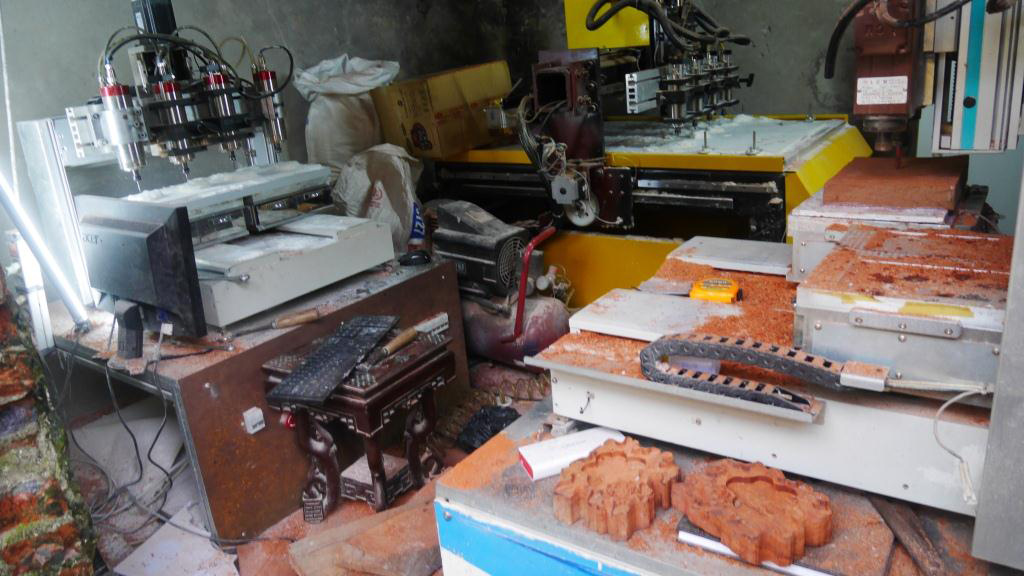
Computerized Ivory Carving set up
Combined with more and more machine carving of evermore mass-produced ivory trinkets, from bangles to chopsticks, it is the story you do not generally read in the international press’s feel-good reports — a “massing up” of the market is clearly taking place to cater to these new demographics with cheaper and cheaper products.
In the old days, one used to encounter elaborate carvings sold for tens of thousands of dollars. I am convinced that these top-end ivory items have not driven the market for many years. With increasing wealth in Chinese society, a bigger population sector can afford lower-level ivory status products. Status is what drives the markets.
Observing young people trying on a range of bracelets in a shop in Mong Lah, sending home images and offering to bring some of these supposedly bargain deals back with them, became the norm.
During the most recent trip we interviewed a Chinese wildlife-trade expert on why the new ban regulations should be considered the end of elephant poaching.
The answer we got from Wei Jei, who briefs and trains forestry officials in China? Things might, indeed, get worse.
At least the legal ivory trade offered some sort of safety valve, which has now lapsed. As we see with the rhino-horn trade, there is also a real chance that the “reverse-stigma syndrome” will come into play: this means that showing off illegal items carries more status and is sexier. Establishing oneself as being above the law is part of this equation.
All indications are that the demand is increasing.
Completed to establish a baseline for further evaluating the new regulations’ impact, a TRAFFIC survey seems to bear out these trends.
The wildlife-monitoring network conducted the survey — “Demand under the ban: China ivory consumption research 2017” — in 15 cities throughout the Middle Kingdom.
Three findings stuck out:
- “Forty-three percent claimed that they intend to purchase ivory in the future, but the percentage dropped to 18% after hearing of the ban.
- “Fifty-one percent of millennials have heard of the ban and, when prompted, 21% intended to buy ivory post-ban.
- “Those who travel overseas have bought significantly more ivory in the past than those who never travel.” In the context of the regional travel, the evidence of totally new demand-and-supply characteristics have been documented.
Today China presides over a human population of 1.4 billion people. If even 18% of them are ready to buy more ivory despite the ban, we are potentially looking at 250 million illegal ivory consumers, at the very least.
I do not even dare to calculate the total consumption, and what that would mean for the number of dead elephants this demand would exact — multiplied by the fact that, once you have purchased the item and wear it to a party, there seems to be nothing illegal about it.
I also question the value of these surveys when the average city dweller — seeing the survey was conducted in urban centres — would by now have some inkling of why these questions are being asked and what answers they should give as supposedly law-abiding citizens. As such, I found it amazing that 18% would declare that they did not care about the law.
That China has a better-engineered control system for internet access than any other nation is well known. There are accounts that up to two-million people in China are paid salaries to control the web. If there was real interest in controlling the illegal trade, it could be done much more effectively than what we have documented.
In 2004, the International Fund for Animal Welfare (IFAW) completed a web survey of illegal wildlife products offered online, concluding that they had found 1,390 ivory items on major Chinese web-trading platforms.
The report goes on to state:
“A year-long random check of the four major e-commerce websites for CITES I-listed species was conducted. Although all of the monitored websites have imposed a ban on ivory and [have a] ‘no endangered species and their products’ policy, a total of 1,937 wildlife products from over 30 species were found on these websites.”
At present, there are websites with similar numbers offered by one dealer alone. Dozens of them are operating.
Take the Alibaba group, China’s leading online marketplace and parent company of key trading-platform Taobao.
Here we have the 2014 case of global luxury group Kering taking Alibaba to court in New York for copyright infringement and selling counterfeit products, including their Gucci bags.
There was an out-of-court settlement, plus a nicely timed feature in China Daily outlining why Alibaba leads the online fight against fakes.
The text tells of some 100 employees shopping on their own platform, buying 100,000 products on offer, spending around 100 million Yuan a year.
These products are then analysed in an Alibaba-owned warehouse and tested.
In cases of infractions, their analytics team then decides which cases to hand to law enforcement. In 2016, it was 1,184 cases, resulting in the arrest of 880 suspects and supposedly the closure of 1,419 counterfeit manufacturing outfits.
Would it be so far-fetched for non-governmental organisations such as IFAW, WWF, the Wildlife Conservation Society or WildAid, already spending millions in China on consumer demand-reduction campaigns, to file a similar legal case?
As long as these web platforms and the dealers who use them constantly create new products for new demographics, demand-reduction spend on awareness campaigns must surely be greatly compromised.
While one side is legal and the other is not, would that not also allow NGO damage claims from these website operators for their inaction when it comes to encouraging more consumers and demand? It would certainly add to the risk/ reward scenario where it involves the traders and companies who own these platforms.
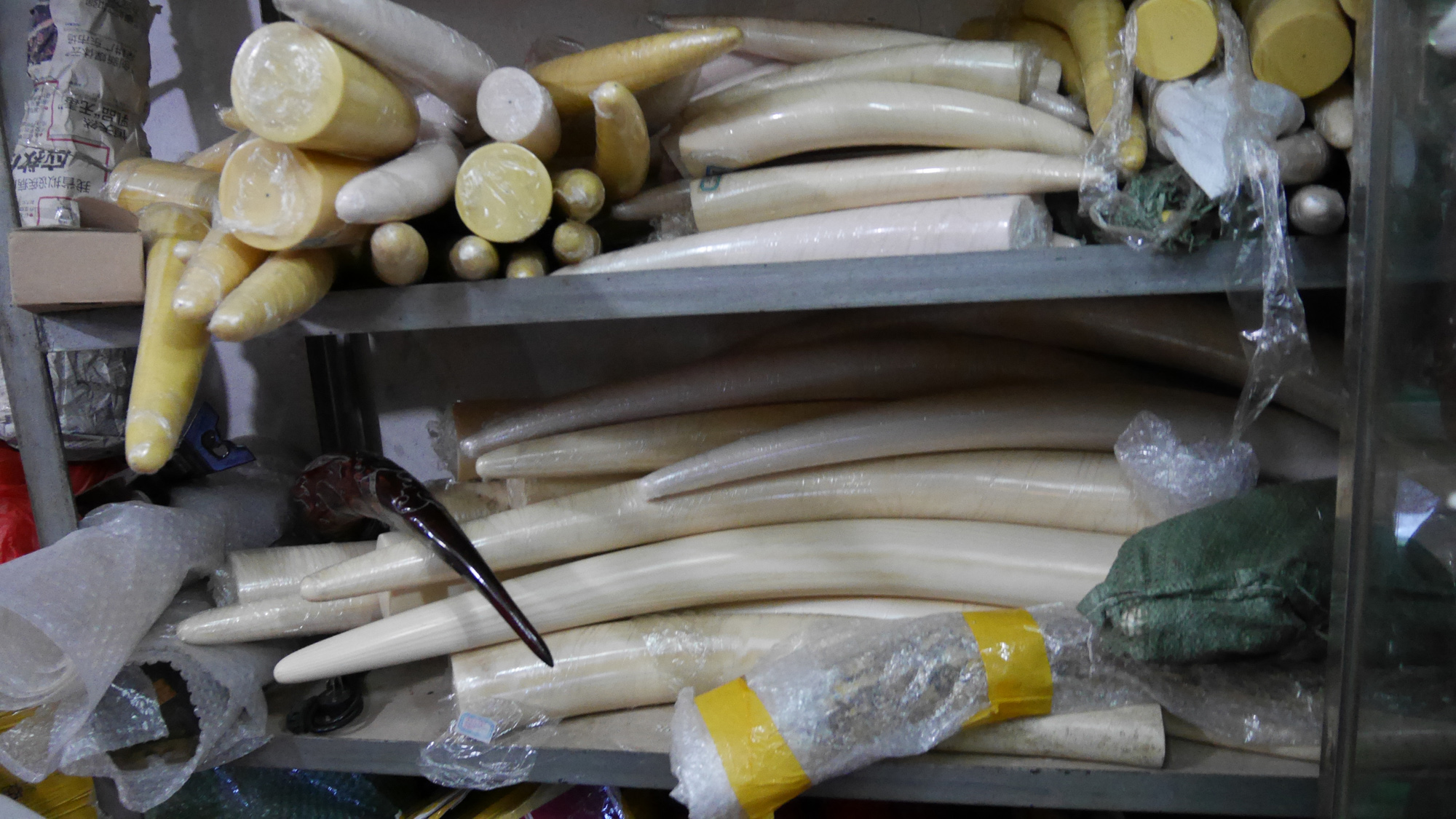
Mass-produced fake ivory for sale in China.
I doubt that the relevant authorities will be prepared to further clamp down on rogue traders/ platforms of their own accord. In my experience, the average Chinese citizen as well as official seems to think that he or she has a cultural right to these products. As long as window-dressing and lip service do the trick, that is the strategy they will pursue.
The Kering approach and general naming-and-shaming might have the best chance to result in some real change.
As it stands, the closure of China’s domestic ivory markets and the worldwide applause that it drew will last the country’s image for a few years before some new, time-consuming, large-scale survey data will result in a fresh outcry and calls for enforcement action.
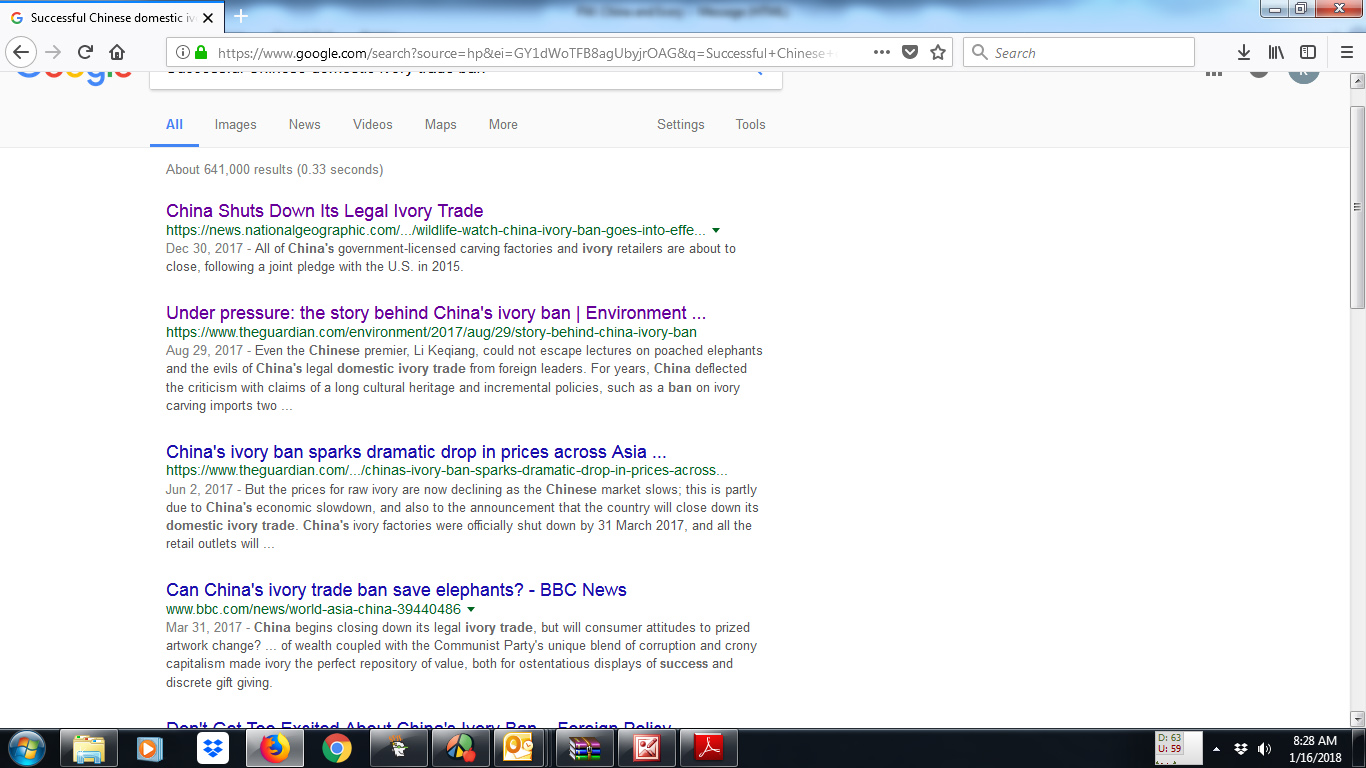
Global coverage lauding China’s domestic ban on ivory.
The time has come to stop celebrating and establish what is really happening on the ground, with sales over the counter and through cyberspace. That, in turn, requires investigative work by local operatives.
When I recently questioned a major US broadsheet correspondent about their largely unqualified story trumpeting the domestic-trade decision, suggesting that they conduct some of this undercover work online, I was told that while investigative journalism was part of their agenda, the undercover aspect would be against their editorial policy.
I am glad I am not an elephant. DM


















 Become an Insider
Become an Insider